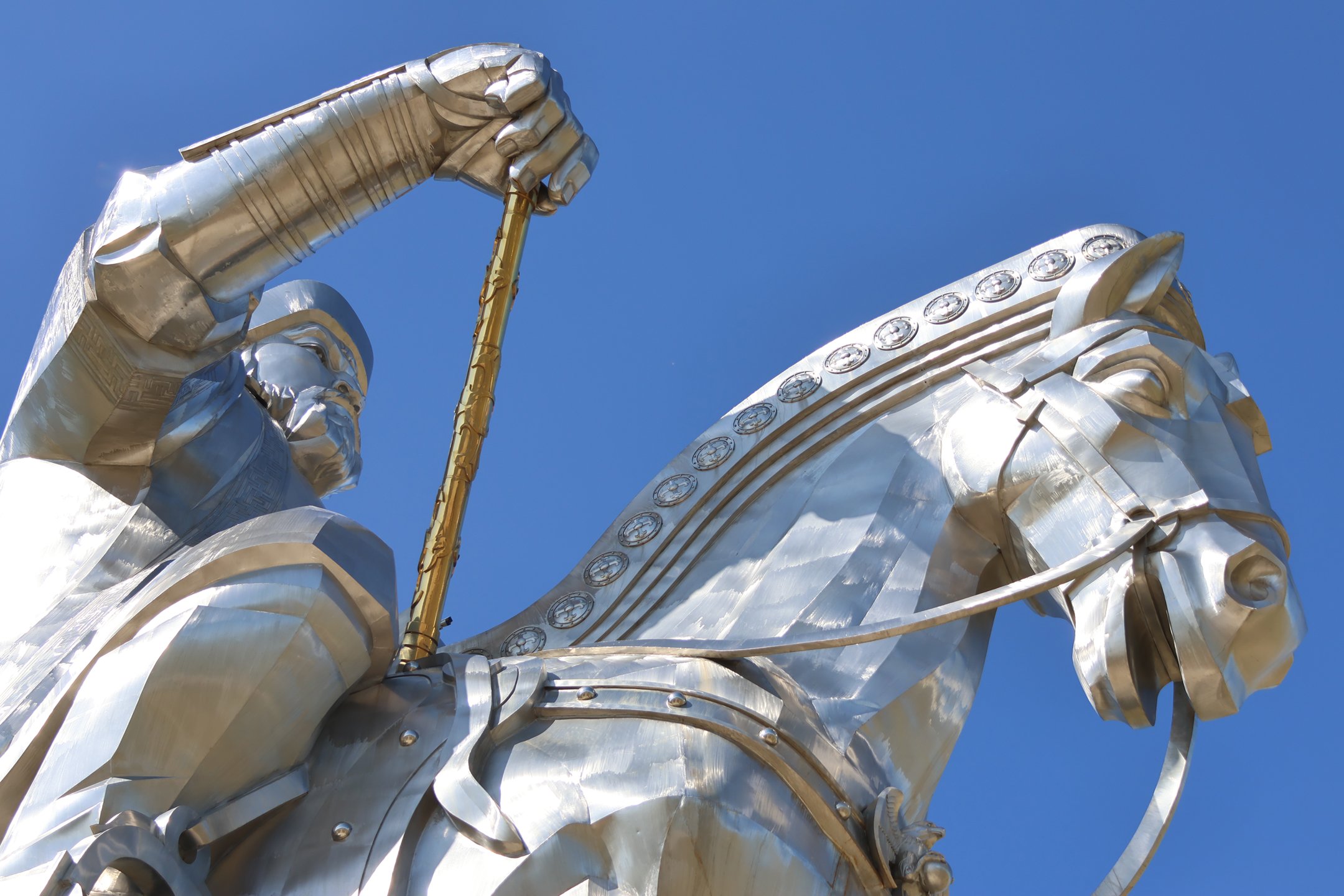Mongolia Sketch: The Legacy of Genghis Khan
Most of what I recall from high school world history about Genghis Khan is of a brutal culture. I learned about hordes of warriors racing on horseback across much of Eurasia, causing all sorts of mayhem in the course of building the Mongol Empire. But the full story behind it paints a very different picture. While preparing for the journey to Mongolia in September, 2023, I found myself applauding much of that history.
Certainly, the Mongol Empire wasn’t created without force and conflict. Lopping off heads and other brutalities were inherent to empire-building in the 10th century (and maybe not much besides the specifics has changed to this day...). It all started with Genghis Khan (1162-1227), who grew up as a humble nomadic steppe dweller named Temujin. As a child, his mother and brothers and he were abandoned by their tribe—a sure death sentence, with winter coming on, but they survived. Then he was kidnapped and treated horribly until he was able to escape and rejoin his family. From those childhood lessons emerged a man who was generous and loyal to his followers—and ruthless to his enemies. He was a self-made leader with honorable innovative views about what a society could be like.
Genghis Khan united the disparate people of the steppes by accepting anyone willing to serve the greater good of the empire. Conquered people who demonstrated loyalty received good treatment and rewards, and they were free to practice their religion of choice (as long as they remembered the empire stood above religion!). There were tax exemptions for religious leaders, scholars, undertakers, doctors, lawyers, and teachers. Both in society and the military, positions were awarded by merit, not by aristocratic lineage. Women enjoyed equal status, and, in fact, it was the wives of the khans who often ran the empire when the men were away. Old practices such as abduction, enslavement, and kidnapping were banned. Animal rustling and theft became capital crimes.
In the military, troops were grouped in concentric circles in multiples of ten rather than in a traditional hierarchy. The military consisted only of cavalry. There was no infantry or supply trains. The grasses of the steppe nurtured their animals, and warriors often rode 100 miles at a stretch, switching to fresh horses as needed. (Meat was placed under the saddles to be tenderized as they rode!) Soldiers were tough, strong, and loyal; they were not allowed to speak of death, injury or defeat. Also, they were charged with providing one day of public service each week when they were in camp. After battles, no looting was allowed until the campaign was finished, and women and children of dead warriors were allotted a portion of the loot. In his 60-year reign, none of his generals left him.
The underlying goal of Genghis Khan’s march across Eurasia was to open trade routes. The actual goal was to win the battle before firing a shot. If a city yielded peaceably, it enjoyed good treatment. If not, the Mongols used united, strategic formations and tactics, inevitably winning the fight. (It was not true, as was believed in Europe at one point, that the Mongols had attack dragons!)
The dictates and approaches to leadership by Genghis Khan were powerful and effective enough that his brothers and sons and their heirs expanded and continued the empire for 800 years. Over time, the Mongols initiated effective communication processes spanning the 4,000 mile empire, a postal system, passports, and paper currency.
The empire built by Chinggis Khan (as it is properly spelled) and his descendants was the largest contiguous empire in world history, covering some 17.8% of the world. The British Empire was, indeed, the largest of all at 25%, but it was not contiguous.
At its fullest extent, it was the largest contiguous empire in history
How is possible not to respect a man who first made himself and then built his immutable place in history? His actual legacy far surpasses the quick soundbite many westerners have learned. A humble man, Genghis Khan would not allow memorials to him. By his decree, his burial site is unknown. Although he refused to allow his biography to be written, a secret document with much written about him was finally unearthed. Through it, scholars have been able to decipher much about the man, his thoughts, and his deeds. Indeed, it lies behind much of the information in this must-read book: Genghis Khan and the Making of the Modern World, by Jack Weatherford.
Sculptures showing what it might have been like to see the Mongol hordes riding across the steppes!
And, oh, by the way: the Mongolians pronounce his name “Chinggis Khaan” (using a “ch” or “j” sound, not a soft “g”). It is believed to be derived for an ancient word for “wolf.” The word “khan” is not a name, but a title for a Mongol or Turkic supreme tribal leader. Perhaps the least we westerners can do is spread more truth about this amazing man, and while we’re at it, pronounce his name correctly!
Please go to www.kazakhtour.com (our tour operator Dosjan Khaval’s website) and www.wild-earth-journeys.com (our tour host Thomas Kelly’s website) for some wonderfully tempting opportunities to travel in Mongolia. I can heartily recommend both.







